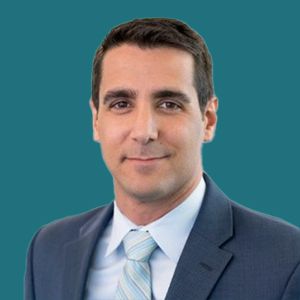Expert Insights on Gene Therapy for International Batten Awareness Day
For International Batten Awareness Day, held annually on June 9, CGTLive reached out to several experts to inquire about the potential impact of gene therapy on the Batten disease treatment landscape.
Ineka Whiteman, PhD

Neuronal ceroid lipofuscinosis (NCL) is a group of 13 rare inherited lysosomal disorders affecting the nervous system which are collectively referred to as Batten disease.1 According to the Batten Disease Support and Research Association (BDSRA), Batten disease is estimated to occur in approximately 2 to 4 in 100,000 births in the United States; however, the BDSRA indicates that the actual occurrence may be even higher.
Several companies are currently developing gene therapies intended to treat specific forms of Batten disease. Among these are REGENXBIO, which is developing RGX-181 and RGX-381 for the CLN2 subtype; Lexeo Therapeutics, which is developing LX1004 for the CLN2 subtype; and Taysha Gene Therapies, which is developing TSHA-118 for the CLN1 subtype.2-4 RGX-381 is specifically intended to address the ocular manifestations of CLN2; as of March 30, 2023, a phase 1/2 clinical trial (NCT05791864) for the therapy is active, but not yet recruiting. RGX-181 remains in preclinical development. According to Lexeo and Taysha’s respective pipeline overviews, LX1004 and TSHA-118 have entered clinical development.
For International Batten Awareness Day, observed annually on June 9, CGTLive™ has reached out to experts to inquire about the current treatment landscape for Batten disease and how gene therapy could potentially impact care for this rare disease. Featured are insights from Ineka Whiteman, PhD, head of research and medical affairs, BDSRA Australia, consultant to BDSRA Foundation (USA) and Beyond Batten Disease foundation, and Paulo Falabella, MD, PhD, vice president, clinical development & operations, patient advocacy, rare diseases, REGENXBIO.
CGTLive: What does the current landscape of care for Batten disease look like? What is the standard of care and what unmet needs are there?
Ineka Whiteman, PhD: The current standard of care for Batten disease is limited to symptomatic and supportive care, with the exception of one disease-modifying treatment for the late infantile form known as CLN2 disease. In 2017, the enzyme replacement therapy cerliponase alfa (Brineura) was approved by the FDA for treatment of CLN2 disease, which slows the progression of motor and language deficits, and appears to delay disease onset where treatment is commenced presymptomatically. By no means however is this a cure. For all forms of Batten disease, our community of families, clinicians, researchers and advocates continue to desperately seek effective treatments—and ultimately cures—for this devastating childhood condition.
Paulo Falabella, MD, PhD

Paulo Falabella, MD, PhD: Batten disease, also known as neuronal ceroid lipofuscinoses, is a group of lysosomal storage disorders that can be caused by mutations in 1 of the 13 CLN genes. All forms of Batten disease share very high unmet needs, including varying degrees of cognitive and motor decline, seizures, blindness and premature death. Currently, there is only one approved therapy for late infantile Batten disease (CLN2 Batten disease), cerliponase alfa (Brineura), which is an enzyme replacement therapy (ERT) delivered biweekly to patients. Although Brineura has slowed down the natural course of the disease and expanded lifespan, caregivers and expert clinicians observe that neurodegeneration continues to progress over time. As patients with CLN2 disease are living longer, it has also become evident that retinal degeneration is a significant aspect of the disease, leading all patients to blindness approximately at the age of 7-8 years old. So, there is still a high unmet need across all forms of Batten disease, including for CLN2 disease.
What key things should the clinical community be focused on right now in the Batten disease space? Are there any current or upcoming treatments (of any type) that are of particular interest?
Ineka Whiteman, PhD: Currently there are investigational drugs in clinical trial for several forms of Batten disease, and numerous more in preclinical R&D, which gives our community some measured, and much-needed, hope.
Of interest is ‘Batten-1’, a novel drug containing the active ingredient miglustat. Sponsor Beyond Batten Disease Foundation together with Theranexus recently announced plans to commence a phase 3 pivotal study by end-2023 for the treatment of CLN3 disease, the most prevalent form of Batten disease. This is the only treatment currently in active clinical development for CLN3 disease. Miglustat is a substrate reduction therapy approved for the treatment of 2 related progressive neurological conditions, Gaucher disease and Niemann-Pick disease type C (NPC)*, and has been subject of extensive R&D for treatment of CLN3 disease over the past decade.
As we await outcomes of these trials however—from a pragmatic, clinical management standpoint—Batten disease clinical guidelines highlight the paramount importance of early implementation of coordinated, multidisciplinary care for this medically complex population, that aims to maintain independence and quality of life for as long as possible. Such guidelines exist for CLN1 and CLN2 disease respectively, and we anticipate the publication of guidelines for CLN3 disease in the near future.
*Miglustat is not approved in the US for treatment of NPC; it is approved in the EU, Canada, Australia, Japan, and other markets.
Paulo Falabella, MD, PhD: Early diagnosis is certainly paramount across all forms of Batten considering that they are progressive neurodegenerative disorders. Early diagnosis allows for early intervention within an optimal therapeutic window, and, consequently, better clinical outcomes. This is true for CLN2 disease, for which there is an approved therapy, but also for the other forms of Batten currently being studied in clinical trials, optimizing the chances of clinical improvement.
I would say the clinical community is still heavily focused on the next wave of treatments. While the approval of ERT with Brineura was an important step for patients living with CLN2 disease, it is still far from completely treating the disease and parents and physicians continue to wait for more effective therapies. Significant advancements have been made over the last decade in the research of promising therapeutic options for Batten, especially in the field of gene therapy, and also related to small molecules and stem-cell therapies.
There are several companies currently developing gene therapies as a potential treatment for Batten disease. What impact could gene therapy have on the Batten disease treatment landscape?
Ineka Whiteman, PhD: As a monogenic condition, Batten disease is a prime candidate for gene-based therapeutic approaches. Batten disease primarily affects neurons of the brain and retina, so central nervous system (CNS)-targeted gene therapies that restore function of these neurons could potentially rescue the disease course and dramatically improve outcomes for affected individuals.
However, there are limitations to the current CNS-targeted gene therapies in development for Batten disease. To date, the adeno-associated virus (AAV) vectors employed specifically target neurons, however emerging research indicates inflammation and activation of glial 'support' cells also play an integral role in the disease pathology. For a treatment to have meaningful clinical benefit, therapeutic approaches will likely also need to target glia and inflammation pathways.
Furthermore, we are learning that cells beyond the CNS may be implicated in Batten disease, including the heart and enteric nervous system. As gene therapy currently stands, there’s not likely to be one ‘silver bullet’ for Batten disease, but rather an adjunct approach required to effectively manage the spectrum of Batten disease pathologies and symptoms. To this end, ongoing development of pharmacological, biologic, and small molecule approaches for the treatment of Batten disease remains important and well-directed.
Paulo Falabella, MD, PhD: There is a lot of hope for gene therapy as a potential treatment for Batten because the disease is caused by mutations in a single gene, and gene therapy has the potential to directly address the underlying cause of the disease by replacing that faulty gene. With a single intervention, AAV gene therapy may introduce a functional copy of the CLN gene inside the patient’s cells, reestablish the production of the missing protein and correct metabolism.
Particularly for CLN2 disease, that is caused by a missing secreted enzyme, gene therapy also offers the potential upside of cross-correction. This means that a cell transduced with gene therapy may start to produce enzyme for itself and also secrete enzyme to other cells in the vicinity. With that, gene therapy may create a bio factory within the CNS or within the eye, allowing for cross correction throughout the organ and yielding better therapeutic results.
Multiple companies are developing gene therapies specifically directed at CLN2 disease, one of the most common forms of Batten disease. Is there potential for gene therapy or cell therapy approaches in other forms of the disease?
Ineka Whiteman, PhD: Yes, there certainly is. At present there are active clinical trials for gene therapies for the treatment of CLN5 disease (Neurogene Inc.) and CLN7 disease (UT Southwestern), respectively. We have also seen recent gene therapy trials in CLN3 and CLN6 disease (both Amicus Therapeutics), however these have since been discontinued for a variety of reasons. In addition, a gene therapy for treatment of CLN1 disease (Taysha Gene Therapies) was due to commence phase 1/2 studies in 2022 yet remains on hold, likely due to financial constraints as a result of the biotech sector downturn.
Paulo Falabella, MD, PhD: The answer is yes, as we have different companies and academic institutions in the gene therapy field working to develop treatments for other forms of the disease. Gene therapies for CLN1, CLN3, and CLN6 are also under development and have yet to advance in clinical development to demonstrate their potential. Other therapeutic approaches such as pharmacological chaperones, small molecules, and stem cell therapy are also being investigated.
Is there anything else not covered by the previous questions that you think treating physicians and the wider clinical community should be aware of in this space?
Paulo Falabella, MD, PhD: I think it’s crucial that the clinical community continues to share their knowledge in order to promote early diagnosis and also to educate regulators of the high unmet need for treatment in this space. While 1 approved treatment like Brineura has been important, there is still an enormous unmet need and room for improvement, not to mention that ERT carries significant logistical and access burdens for patients and their parents, so we need to continue advocating for more innovative treatments for this group of diseases.